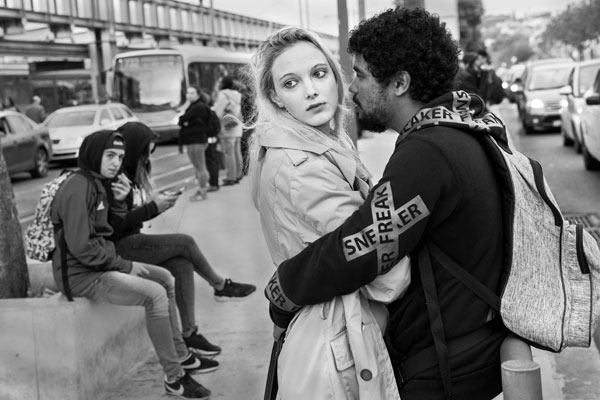The Best Guide To Framing Streets
Wiki Article
How Framing Streets can Save You Time, Stress, and Money.
Table of ContentsAbout Framing StreetsLittle Known Questions About Framing Streets.5 Simple Techniques For Framing StreetsSome Known Details About Framing Streets What Does Framing Streets Do?Not known Facts About Framing Streets
, generally with the purpose of catching images at a definitive or poignant minute by cautious framing and timing. https://www.goodreads.com/user/show/174116073-david-turley.
Framing Streets Fundamentals Explained
Susan Sontag, 1977 Road digital photography can concentrate on people and their habits in public. In this regard, the street photographer resembles social documentary photographers or photojournalists who likewise operate in public locations, but with the goal of capturing relevant events. Any of these digital photographers' pictures might catch people and building visible within or from public places, which often requires browsing ethical issues and regulations of privacy, security, and residential or commercial property.Depictions of everyday public life develop a category in almost every duration of globe art, starting in the pre-historic, Sumerian, Egyptian and very early Buddhist art durations. Art taking care of the life of the road, whether within views of cityscapes, or as the dominant motif, shows up in the West in the canon of the Northern Renaissance, Baroque, Rococo, of Romanticism, Realistic look, Impressionism and Post-Impressionism.
How Framing Streets can Save You Time, Stress, and Money.
Louis Daguerre: "Boulevard du Holy place" (1838 or 1839) In 1838 or 1839 the first photo of numbers in the street was recorded by Louis-Jacques-Mand Daguerre in one of a set of daguerreotype views taken from his workshop home window of the Blvd du Temple in Paris. The 2nd, made at the height of the day, shows an uninhabited stretch of road, while the other was taken at regarding 8:00 am, and as Beaumont Newhall reports, "The Boulevard, so continuously filled up with a relocating throng of pedestrians and carriages was flawlessly solitary, except a person that was having his boots cleaned.As a result his boots and legs were well specified, but he lacks body or head, since these were in motion." Charles Ngre, waterseller Charles Ngre. https://yoomark.com/content/street-photography-presets-adobe-lightroom-cc-timeless-journey was the first digital photographer to acquire the technical refinement needed to register individuals in movement on the street in Paris in 1851. Photographer John Thomson, a Scotsman functioning with reporter and social lobbyist Adolphe Smith, published Road Life in London in twelve regular monthly installations starting in February 1877
The Ultimate Guide To Framing Streets
Eugene Atget is considered as a progenitor, not because he was the very first of his kind, however as an outcome of the popularisation in the late 1920s of his record of Parisian streets by Berenice Abbott, who was inspired to carry out a similar paperwork of New york city City. [] As the city created, Atget helped to advertise Parisian roads as a deserving topic for photography.
7 Easy Facts About Framing Streets Shown
Martin is the first videotaped professional photographer to do so in London with a masked electronic camera. Mass-Observation was a social research study organisation established in 1937 which aimed to tape daily life in Britain and to record the responses of the 'man-in-the-street' to King Edward VIII's abdication in 1936 to marry divorce Wallis Simpson, and the succession of George VI. Andre Kertesz.'s extensively appreciated Images la Sauvette (1952) (the English-language edition was entitled The Definitive Minute) advertised the concept of taking a picture at what he called the "decisive moment"; "when form and content, vision and composition merged into a transcendent whole" - copyright a7iv.Unknown Facts About Framing Streets
The recording equipment was 'a concealed camera', a 35 mm Contax hidden underneath his coat, that was 'strapped to the chest and connected to a lengthy cable strung down the best sleeve'. His job had little contemporary impact as due to Evans' level of sensitivities regarding the click site creativity of his project and the privacy of his subjects, it was not published till 1966, in the publication Lots of Are Called, with an intro composed by James Agee in 1940.Helen Levitt, then an instructor of kids, related to Evans in 193839. She recorded the temporal chalk illustrations - vivian maier that became part of children's road society in New York at the time, in addition to the youngsters that made them. In July 1939, Mo, MA's brand-new photography section included Levitt's operate in its inaugural exhibitionRobert Frank's 1958 publication,, was substantial; raw and often indistinct, Frank's pictures examined traditional photography of the time, "challenged all the formal rules put down by Henri Cartier-Bresson and Walker Evans" and "flew in the face of the wholesome pictorialism and wholehearted photojournalism of American publications like LIFE and Time".
Report this wiki page